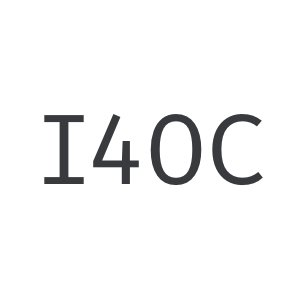History of the Botanic Garden of the Stefan Batory University in Vilna (Vilnius) (1919–1939)
DOI:
https://doi.org/10.4467/23921749SHS.16.012.6155Keywords:
Botanic Garden in Vilna (Wilno, Vilnius), Stefan Batory University, plant collections, teaching botany, Jean-Emmanuel Gilibert, Konstanty Prószyński (Proszyński), Franciszek Ksawery Skupieński, Józef Trzebiński, Piotr WiśniewskiAbstract
The university in Vilna (Lithuanian: Vilnius), now Vilniaus universitetas, founded in 1579 by Stefan Batory (Stephen Báthory), King of Poland and Grand Duke of Lithuania, was a centre of Polish botany in 1780-1832 and 1919-1939. The Botanic Garden established by Jean-Emmanuel Gilibert (1741–1814) in 1781 (or, actually, from 1782) survived the loss of independence by Poland (1795), and a later closure of the University (1832), and it continued to function until 1842, when it was shut down by Russian authorities. After Poland had regained independence and the University was reopened as the Stefan Batory University (SBU), its Botanic Garden was established on a new location (1919, active since 1920). It survived as a Polish institution until 1939. After the Second World War, as a result of changed borders, it found itself in the Soviet Union, and from 1990 – in the Republic of Lithuania.
A multidisciplinary research project has been recently launched with the aim to create a publication on the history of science at the Stefan Batory University. The botanical part of the project includes, among others, drafting the history of the Botanic Garden. Obtaining electronic copies of archival documents, e.g. annual reports written by the directors, enabled a more thorough analysis of the Garden’s history.
Piotr Wiśniewski (1884–1971), a plant physiologist, nominated as Professor in the Department of General Botany on 1 June 1920, was the organiser and the first director of the Garden. He resigned from his post in October 1923, due to financial problems of the Garden. From October 1923 to April 1924, the management was run by the acting director, Edward Bekier (1883–1945), Professor in the Department of Physical Chemistry, Dean of the Faculty of Mathematics and Natural Sciences. For 13 subsequent years, i.e. from 1 May 1924 to 30 April 1937, the directorship of the Garden was held by Józef Trzebiński (1867–1941), a mycologist and one of the pioneers of phytopathology in Poland, Head of the Department of Botany II (Agricultural Botany), renamed in 1926 as the Department of Plant Taxonomy, and in 1937 – the Department of Taxonomy and Geography of Plants.
From May 1937 to 1939, his successor as director was Franciszek Ksawery Skupieński (1888–1962), a researcher of slime moulds.
Great credit for the development of the Garden is due to the Inspector, i.e. Chief Gardener, Konstanty Prószyński (Proszyński) (1859–1936) working there from 1919, through his official nomination in 1920, until his death. He was an amateur-naturalist, a former landowner, who had lost his property. Apart from the work on establishing and maintaining the Garden’s collection, as well as readying seeds for exchange, he published one mycological paper, and prepared a manuscript on fungi, illustrated by himself, containing descriptions of the new species. Unfortunately, this work was not published for lack of funds, and the prepared material was scattered. Some other illustrations of flowering plants drawn by Prószyński survived. There were some obstacles to the further development of the institution, namely substantially inadequate funds as well as too few members of the personnel (1–3 gardeners, and 1–3 seasonal workers).
The area of the Garden, covering approx. 2 hectares was situated on the left bank of the Neris river (Polish: Wilia). It was located on sandy soils of a floodplain, and thus liable to flooding. These were the reasons for the decision taken in June 1939 to move the Garden to a new site but the outbreak of the Second World War stood in the way. Despite these disadvantageous conditions, the management succeeded in setting up sections of plants analogous to these established in other botanical gardens in Poland and throughout the world, i.e. general taxonomy (1922), native flora (1922), psammophilous plants (1922), cultivated plants (1924/1925), plant ecology (1927/1928), alpinarium (1927–1929), high-bog plants (1927–1929), and, additionally – in the 1920s – the arboretum, as well as sections of aquatic and bog plants. A glasshouse was erected in 1926–1929 to provide room for plants of warm and tropical zones.
The groups representing the various types of vegetation illustrated the progress in ecology and phytosociology in the science of the period (e.g. in the ecology section, the Raunkiaer’s life forms were presented). The number of species grown increased over time, from 1,347 in 1923/1924 to approx. 2,800 in 1936/1937. Difficult weather conditions – the severe winter of 1928 as well as the snowless winter and the dry summer of 1933/34 contributed to the reduction of the collections. The ground collections, destroyed by flood in spring of 1931, were restored in subsequent years. Initially, the source of plant material was the wild plant species collected during field trips. Many specimens were also obtained from other botanical gardens, such as Warsaw and Cracow (Kraków). Beginning from 1923, printed catalogues of seeds offered for exchange were published (cf. the list on p. ... ). Owing to that, the Garden began to participate in the national and international plant exchange networks. From its inception, the collection of the Garden was used for teaching purposes, primarily to the students of the University, as well as for the botanical education of schoolchildren and the general public, particularly of the residents of Vilna. Scientific experiments on phytopathology were conducted on the Garden’s plots.
After Vilna was incorporated into Lithuania in October 1939, the Lithuanian authorities shut down the Stefan Batory University, thus ending the history of the Polish Botanic Garden. Its area is now one of the sections of the Vilnius University Botanic Garden (“Vingis” section – Vilniaus universiteto botanikos sodas). In 1964, its area was extended to 7.35 hectares. In 1974, after establishing the new Botanic Garden in Kairenai to the east of Vilnius, the old Garden lost its significance. Nevertheless, it still serves the students and townspeople of Vilnius, and its collections of flowering plants are often used to decorate and grace the university halls during celebrations.
References
ŹRÓDŁA ARCHIWALNE
Archiwum Uniwersytetu Łódzkiego. Teczki osobowe pracowników: sygn. 5140 – Jakub Mowszowicz.
Lietuvos Centrinis Valstybės Archyvas [Litewskie Centralne Archiwum Państwowe w Wilnie] (LCVA).
Akta Uniwersytetu Stefana Batorego w Wilnie: sygn. F. 175 A 14 nr 300 – Akta osobowe Andrzej Michalski.
Akta Uniwersytetu Stefana Batorego w Wilnie: sygn. F. 175 I A nr 911 – Zakłady Wydz. Mat.-Przyr.: Ogród Botaniczny 1923/24–1936/37.
Akta Uniwersytetu Stefana Batorego w Wilnie: sygn. F. 175 I A nr 152 – Sprawozdania roczne.
Akta Uniwersytetu Stefana Batorego w Wilnie: sygn. F. 175 I A nr 391 – Wydział Mat.-Przyr. Sprawozdania 1923/24–1933/34.
Akta Uniwersytetu Stefana Batorego w Wilnie: sygn. F. 175 I Bb nr 41 – Akta osobowe Konstanty Prószyński.
Akta Uniwersytetu Stefana Batorego w Wilnie: sygn. F. 175 I Bb nr 59 – Akta osobowe Józef Trzebiński.
Akta Uniwersytetu Stefana Batorego w Wilnie: sygn. F. 175 I Bb nr 784 – Akta osobowe Piotr Wiśniewski.
Akta Uniwersytetu Stefana Batorego w Wilnie: sygn. F. 175 I Bb nr 775 – Akta osobowe Franciszek Skupieński.
Akta Uniwersytetu Stefana Batorego w Wilnie: sygn. F. 175 VII B nr 52 – Sprawozdania Wydz. Mat.-Przyr. 1929/30–1935/36.
Akta Uniwersytetu Stefana Batorego w Wilnie: sygn. F. 175 VII B nr 53 – Protokoły Rady Wydz. Mat.-Przyr. 1919/20.
Akta Uniwersytetu Stefana Batorego w Wilnie: sygn. F. 175 VII B nr 55 – Protokoły Rady Wydz. Mat.-Przyr. 1921/22.
Akta Uniwersytetu Stefana Batorego w Wilnie: sygn. F. 175 VII B nr 56 – Protokoły Rady Wydz. Mat.-Przyr. 1922/23.
Akta Uniwersytetu Stefana Batorego w Wilnie: sygn. F. 175 VII B nr 57 – Protokoły Rady Wydz. Mat.-Przyr. 1923/24.
Akta Uniwersytetu Stefana Batorego w Wilnie: sygn. F. 175 VII B nr 59 – Protokoły Rady Wydz. Mat.-Przyr. 1925/26.
Akta Uniwersytetu Stefana Batorego w Wilnie: sygn. F. 175 VII B nr 161 – Protokoły Rady Wydz. Mat.-Przyr. 1936/37–1937/38.
Akta Uniwersytetu Stefana Batorego w Wilnie: sygn. F. 175 VII B nr 198 – Wydz. Mat.-Przyr. Sprawozdanie za r. ak. 1938/39.
Akta Uniwersytetu Stefana Batorego w Wilnie: sygn. F. 175 VII B nr 200 – Protokoły Rady Wydz. Mat.-Przyr. 1938/39.
Akta Uniwersytetu Stefana Batorego w Wilnie: sygn. F. 175 VII B nr 230 – Ogród Botaniczny 1938.
Akta Uniwersytetu Stefana Batorego w Wilnie: sygn. F. 175 VII B nr 232 – Wydz. Mat.-Przyr. Sprawozdania roczne Zakładów 1936/37, 1937/38.
OPRACOWANIA
Baliński, Michał 1835: Opisanie statystyczne miasta Wilna. Wilno: druk. J. Zawadzki.
Bukowiecki, Henryk 1987: Skupieński Franciszek Ksawery (1888–1962). [W:] Słownik biologów polskich. Pod redakcją Stanisława Feliksiaka. Warszawa: Państwowe Wydawnictwo Naukowe. ISBN 83-01-00656-0.
Chlebowski, Bronisław (red.) 1895: Słownik Geograficzny Królestwa Polskiego i Innych Krajów Słowiańskich. Warszawa: druk „Wieku”, t. XIV.
Grębecka, Wanda 1979: L’enseignement de la botanique à l’Université de Vilna (1781–1839). Kwartalnik Historii Nauki i Techniki 24(3), ss. 595–610.
Grębecka, Wanda 1988: Badania szaty roślinnej prowadzone w ośrodku wileńskim i krzemienieckim (1781–1840), [W:] Wkład wileńskiego ośrodka naukowego w przyrodniczepoznanie kraju (1781–1842). Pod redakcją Józefa Babicza i Wandy Grębeckiej. Wrocław – Warszawa – Kraków – Gdańsk – Łódź: Zakład Narodowy im. Ossolińskich, Wydawnictwo PAN. ISSN 0077-054X, ss. 115–225 („Monografie z dziejów nauki i techniki” 141) .
Grębecka, Wanda 1993: The Vilna school of botany (1781–1832). [W:] Studies on the history of botanical gardens and arboreta in Poland. Pod redakcją Alicji Zemanek i Bogdana Zemanka. Kraków: Polish Academy of Sciences, W. Szafer Institute of Botany. ISSN 0867-0749, s. 59–76 („Polish Botanical Studies, Guidebook Series” 9).
Grębecka, Wanda 1998: Wilno–Krzemieniec. Botaniczna szkoła naukowa (1781–1841). Warszawa: Komitet Historii Nauki Polskiej Akademii Nauk. ISBN 83-908973-1-8 („Rozprawy z Dziejów Nauki i Techniki” 7).
Jundziłł, Stanisław 1850: Gabinet historyi naturalnej i ogród botaniczny wileńskiego Uniwersytetu. Biblioteka Warszawska I, ss. 39–59.
Hryniewiecki, Bolesław 1937: Prof. dr Józef Trzebiński Czterdziestolecie pracy naukowej. Acta Societatis Botanicorum Poloniae 14(4), ss. 249–268, portr. k. 1 nlb. (Rés.:Le professeur dr. Józef Trzebiński. Note biographique à l’occasion duquarantenaire de son travail scientifique).
Klimavičiute, Jolita 1995: Józef Trzebiński – profesor Uniwersytetu Stefana Batorego. Lithuania1(14), ss. 115–126.
Köhler, Piotr 1991: Botanika w Krakowie i Wilnie w latach 1780–1840. Wszechświat 92(1), ss. 10–13.
Köhler, Piotr 1994a: Collections of 18th Century Vilna Botanists in the Józef Jundziłł Herbarium. Botanical Journal of Scotland 46(4), ss. 589–593.
Köhler, Piotr 1994b: Old herbaria of Polish botanists in Vilna and Kiev. Taxon 43(3), ss. 487–488.
Köhler, Piotr 1994c: Rośliny z terenu Białorusi w zielniku Józefa Jundziłła. Kwartalnik Historii Nauki i Techniki 39(3–4), ss. 93–102 (summ.: Plants collected in Byelorussia in the Józef Jundziłł herbarium).
Köhler, Piotr 1994d: Zielniki botaników ośrodka wileńskiego z lat 1780–1840 w Kijowie, Krakowie i Wilnie. Kwartalnik Historii Nauki i Techniki 39(1), ss. 109–116 (sum.: Herbariums of botanists from Vilnius centre in the years 1780–1840 remained in Kiev, Cracow and Vilnius).
Köhler, Piotr 1994e: Zielniki botaników polskich w Wilnie i Kijowie zebrane przed rokiem 1840.Herbaria of Polish botanists collected before 1840 in Vilna and Kiev. Wiadomości Botaniczne38(3/4), ss. 74–177.
Köhler, Piotr 1995a: Dawne ogrody botaniczne Wilna. Old botanic gardens in Vilna (Vilnius, Lithuania). Wiadomości Botaniczne 39(1/2), ss. 144–147.
Köhler, Piotr 1995b: Józef Jundziłł i jego zielnik. Wszechświat 96(7–8), ss. 83–186.
Köhler, Piotr 1995c: Zielnik Józefa Jundziłła. Herbarium of Józef Jundziłł. Kraków: W. Szafer Institute of Botany, Polish Academy of Sciences. ISBN 83-85444-40-8 („Polish Botanical Studies, Guidebook Series” 13).
Köhler, Piotr 1997a: Badania Józefa Jundziłła nad florą Litwy po 1830 r. (w świetle nieznanych materiałów rękopiśmiennych). Kwartalnik Historii Nauki i Techniki 42(1), ss. 43–74 (summ.: Józef Jundziłł’s studies on flora of Lithuania after 1830 on the basis of his unknown manuscript).
Köhler, Piotr 1997b: Biblioteka naukowa Józefa Jundziłła (1794–1877). Kwartalnik Historii Nauki i Techniki 42(3–4), ss. 63–84 (summ.: The scientific library of Józef Jundziłł (1794–1877).
Köhler, Piotr 1997c: Herbarium of Józef Jundziłł (1794–1877). Taxon 46(2), ss. 365–366.
Köhler, Piotr 1999: Zielnik Józefa Jundziłła – addendum. Herbarium of Józef Jundziłł – addendum. Wiadomości Botaniczne 3(1/2), ss. 86–88.
Köhler, Piotr 2004: Józef Jundziłł (1794–1877). Materiały do biografii. Kwartalnik HistoriiNauki i Techniki 49(1), ss. 83–117 (summ.: Józef Jundziłł (1794–1877). Materials for his biography) .
Köhler, Piotr 2011: Dawne ogrody botaniczne Wilna – dwie dekady później. Old botanic garden in Vilna (Vilnius, Lithuania) – two decades later. Wiadomości Botaniczne 55(3/4), ss. 175–180.
L.R. 1871: Ogród botaniczny w Wilnie. Tygodnik Illustrowany ser. II VII(170), ss. 153–154.
Kornaś, Jan; Medwecka-Kornaś, Anna 2002. Geografia roślin. Wydanie nowe. Warszawa: Wydawnictwo naukowe PWN. ISBN 83-01-13782-7.
Majewski, Tomasz 2016: Dzieje poznania chorób roślin w Polsce. Warszawa: Wydawnictwo SGGW, Instytut Historii Nauki PAN, ss. 638.
Mienicki, Ryszard 1929: Pierwsze dziesięciolecie Uniwersytetu Stefana Batorego w Wilnie. [W:] Księga Pamiątkowa ku uczczeniu CCCL rocznicy założenia i X wskrzeszenia Uniwersytetu Wileńskiego. T. II. Dziesięciolecie 1919–29. Wilno: Nakł. Uniwersytetu Stefana Batorego, ss. 115(1)–158(44) .
Mowszowicz, Jakub 1948–1951 [wyd. 1951]: Z historii dawnych ogrodów botanicznych Uniwersytetu Wileńskiego. (Contribution à l’histoire des anciens jardins botaniquesde Wilno). Kosmos ser. A 66, ss. 209–230.
Mowszowicz, Jakub 1966: Botanika i botanicy w Uniwersytecie Stefana Batorego w Wilnie w latach 1919–1939 (Przyczynki i wspomnienia). Studia i Materiały z Dziejów Nauki Polskiej Ser. B 12, ss. 99–124. (Rés.: La chaire de botanique et ses représentants à l’Université de Stefan Bator à Vilna en cours de la période de 1919 à 1939) .
Mowszowicz, Jakub 1973: Prof. dr Piotr Wiśniewski (1881–1971). Wiadomości Botaniczne 17(2), ss. 75–77.
Paszewski, Adam 1971: Profesor dr Piotr Wiśniewski w dziewięćdziesiątą rocznicę urodzin. Annales Universitatis Mariae Curie-Skłodowska Lublin – Polonia Sectio C 26, ss. I–X, k. 1 nlb. [portr. przed artykułem] + kk. 4 nlb. [dokumenty na końcu], [s. IX – „Wykaz prac Prof. dr Piotra Wiśniewskiego”].
Portal Internetowy „Poznaj Wilno” 2014–2015: „Park Zakret” („Park Vingis”). Publikacja dostępna online: http://poznajwilno.pl/miasto/zabytki/kategoria-parki-pomniki/park-zakretpark-vingis/(dostęp: 08. 09. 2016).
Rutkowska, Irena 1974: Józef Trzebiński. Wiadomości Botaniczne 18(4), ss. 237–240. .
Rydzewski, Bronisław 1929: Wydział Matematyczno-Przyrodniczy U.S.B. w latach 1919–1929. [W:] Księga Pamiątkowa ku uczczeniu CCCL rocznicy założenia i X wskrzeszenia Uniwersytetu Wileńskiego. T. II. Dziesięciolecie 1919–29. Wilno: Nakł. Uniwersytetu Stefana Batorego, ss. 273(1)–376(104).
Skridaila, Audrius 2001: Introduction of woody plants in Vilnius University Botanical Garden in 1781–2000. Vilnius: Daktaro disertacijos santrauka.
Skridaila, Audrius; Naujalis, J. R. 2002: Results of woody plant introduction in the Vilnius University Botanical Garden (1781–2000). Biologija 1, ss. 72–74.
Skridaila, Audrius; Žilinskaitė, Silva 2009: Vilniaus universiteto Botanikos sodas. Vilnius University Botanical Garden. [W:] Lietuvos botanikos sodai. Botanic gardens of Lithuania. Pod redakcją R. Žadeikienė. Vilnius: Vilniaus Universitetas.
Skridaila, Audrius; Žilinskaitė, Silva; Shiyan, Natalia 2015: Jean Emmanuel Gilibert and Vilnius University Botanical Garden: results of current studies of archive material from Vilnius archives, Göttingen University and National Herbarium of Ukraine (KW). Kwartalnik Historii Nauki i Techniki60(1), ss. 95–116.
Sławiński, Witold 1947: X. Stanisław Bonifacy Jundziłł profesor Historii Naturalnej Wszechnicy Wileńskiej. The Rev. Stanisław Bonifacy Jundziłł Professor of Natural History in the University of Wilno. Annales Universitatis Mariae Curie-Skłodowska. Lublin – Polonia Sectio E 1, Suppl. I, ss. 1–208 + 13 tabl. nlb.
Szweykowscy, Alicja i Jerzy (red.) 2003: Słownik botaniczny. Wyd. II, zmienione i uzupełnione. Warszawa: Wiedza Powszechna. ISBN 83-214-1305-6.
Vikipedija 2016a: Vingio parkas. Publikacja dostępna online: https://lt.wikipedia.org/wiki/Vingio_parkas (dostęp: 08. 09. 2016) .
Vikipedija 2016b: Antanas Minkevičius. Publikacja dostępna online: https://lt.wikipedia.org/wiki/Antanas_Minkevičius (dostęp: 08. 09. 2016).
Wiśniewski, Piotr 1938: †Konstanty Proszyński. Wspomnienie pośmiertne – Nachruf (Z portretem – Mit Bildnistafel). Acta Societatis Botanicorum Poloniae 15(4), ss. XXVII–XXIX [Nachruf s. XXIX], portr. k. 1 nlb.
Wodziczko, Adam 1926: Ogrody botaniczne w Polsce. [W:] Pamiętnik Jubileuszowej Wystawy Ogrodniczej w Poznaniu 25. IX–3 X 1926. Poznań: Nakł. Komitetu Jubileuszowej Wystawy Ogrodniczej, ss. 44–59.
Downloads
Published
How to Cite
Issue
Section
License
Copyright (c) 2016 Alicja Zemanek, Piotr Köhler

This work is licensed under a Creative Commons Attribution-NonCommercial-NoDerivatives 3.0 Unported License.






























